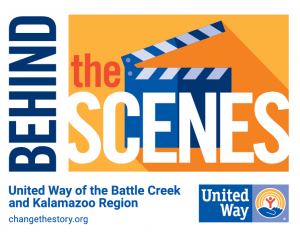Behind The Scenes: Our History of Dreaming & Doing
March 11, 2021


If anyone knew about dealing with tough times, it was Frances Wisebart Jacobs.
By 1887, the 44-year-old Jacobs and her husband, Abraham, had lost a young son, suffered major fires at their two clothing stores, and saw one store go out of business. Yet Jacobs looked beyond her own difficulties to her fellow Denver residents who were struggling. She became a champion of charitable work, creating and leading initiatives to bring food and basic needs to the poor, fighting unfair working conditions for women, assuring adequate health care, and promoting free kindergarten. Her niece described her as “that rare combination of dreamer and doer.”
Denver needed both. Local health and welfare agencies couldn’t raise enough money to meet the overwhelming need. Jacobs sat down with several faith-based leaders and together they developed an innovative solution: a unified fundraising campaign. Not only did the newly christened Charitable Organization Society solicit financial support, it also coordinated relief services, counseled and referred clients, and made emergency assistance grants where needed. That year, the Society raised $21,700 to benefit 10 local agencies.
Good ideas spread quickly. By 1922, this one had nationwide reach under the name Community Chest. A few organized nationally as the American Association of Community Organizations. Local Community Chests worked with partner agencies to identify the greatest needs, and individual donors and businesses gave to their local Community Chest campaign so the dollars would be invested in that shared work. In the 1960s, Community Chests gradually came together under a new name: United Way.
Today, United Way is the world’s largest privately funded nonprofit. It has global reach, local expertise, and cross-sector leadership.
Modern Dreamers & Doers
Here in our region, the United Way model has delivered a century of impact.
In 1921, forward-thinking Battle Creek leaders created the Social Service Bureau, modeled on the Community Chest. Its fundraising campaign, the Battle Creek Relief Fund, raised over $66,000. (Among the partner agencies in that first year was Charitable Union, which remains a United Way partner today.) This shared effort grew, providing support for families during the Great Depression and World War II. Generous corporate donors such as Kellogg Co. proved vital. By 1957, the Community Chest became the Battle Creek Area United Fund, and a decade later it merged with the Calhoun County Community Council to become United Community Services. That effort embraced the name United Way in 1975.
Kalamazoo followed a similar path. Seven health and human services agencies came together to form Kalamazoo Associated Charities in 1914, investing resources in health and human services. In 1925, this group formed the Kalamazoo Community Chest. Raising $110,000 in that first year, it notched its first $1 million campaign in 1966 with generous support from The Upjohn Company, Stryker Corp. and many others. In 1971, the Community Chest became Greater Kalamazoo United Way.
GKUW and United Way of Greater Battle Creek continued serving their respective communities well. But the world—and the social needs in the region—were changing. Over the decades, both United Ways evolved from simple fundraisers to strategic partners. They worked alongside community leaders and nonprofits to target the most pressing needs and how to address them. They also began to see how the factors that created those needs among vulnerable children and families weren’t limited to county borders.
By the end of the millennium’s first decade, the two United Ways realized the value in bringing their strengths together to tackle challenges regionally while remaining focused on the unique needs in each community. The result was United Way of the Battle Creek and Kalamazoo Region, formed through a merger of equals in 2012.
Using research and insights from local partners, United Way BCKR developed shared, long-term goals in education, financial stability, health and basic needs rooted in racial and economic equity. The work has delivered extraordinary results locally and regionally. You can see our progress in our most recent impact report.
As far as we know, Frances Wisebart Jacobs never visited our region. But her legacy of being “a dreamer and a doer” aptly describes our United Way. We dream of a vibrant community where all people realize their full potential—and every day we gather the people, ideas and resources to make that dream real.
What can you do? Help us celebrate our history of impact! We’ve begun planning a centennial celebration for 2022—the midpoint of the founding of our legacy United Ways. Stay tuned for more to come!
MORE: See all the stories in this series.

![]()
Posted in BC/Kzoo
